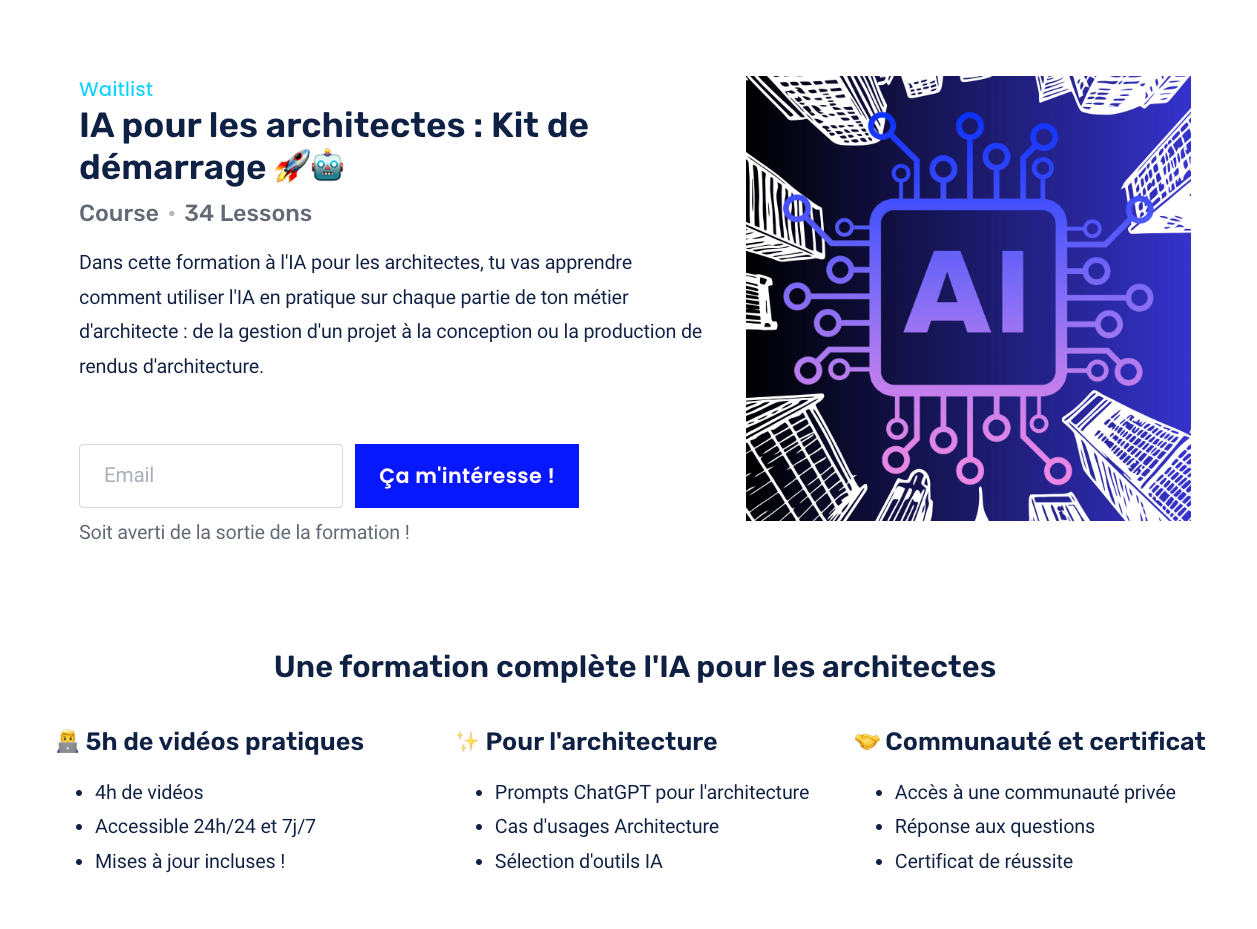AI architecture plans generators
What are the benefits of AI architecture plans generators, which tools to use, and how to start with AI.

Hello everyone!
Today is the second episode of the podcast. Last week, there were quite a few views and I feel like this format interests you.
Feel free to tell me in the comments and subscribe to the channel if you're passionate about topics like artificial intelligence (AI) and architecture.
This year, I am dedicating myself to exploring the possibilities offered by AI in the field of architecture. Meanwhile, I'm developing training courses, which you can find the link to in the description.
Design and Modeling with AI
Today, we're going to discuss how AI is transforming architectural design and modeling. How can these technologies help us create projects in an innovative way?
Current Adoption of Modeling Tools
It's important to note that we are still at the early stages of the widespread adoption of these tools. In comparison, AI chatbots like ChatGPT are widely used, while architecture remains a niche field.
Nevertheless, architecture can benefit from AI development in related fields like video games (prompt to 3D) or industry (optimization, prefabrication…)
The low adoption of these tools can be explained by several factors:
- Limited user base: The market of architects using these technologies is still limited.
- High software costs: High prices can be a barrier for many agencies.
- Interoperability challenges: The emergence of a standard that allows for easy transition from one software to another.
Some software offers AI plugins, facilitating semi-automated modeling by proposing different options to choose from. However, their capabilities are often limited.
AI for Modeling or Rendering
AI-generated image tools, which are based on Stable Diffusion, are integrated into traditional modeling software via plugins: Revit, SketchUp, Archicad...
But there are also plugins to automate the modeling or drawing of plans using AI.
For example, on Revit, I have identified Plan Finder, which seems promising, although its capacities are still somewhat limited.
Conversely, online services like Finch3D or Hektar offer interesting possibilities for volume and plan generation with AI.
Software Database
I have created a database of AI tools for architecture. My goal is to provide a list of stable and promising software in this burgeoning market.
Types of AI-assisted Modeling Software
BIM and CAD modeling software can be classified into two main categories:
Traditional Software:
Revit, Rhino, or Archicad allow for AI integration through plugins. However, their capacity for evolution is often limited by the "technical debt" accumulated over the years.
Online Applications:
Snaptrude, Rayon, or Infurnia represent interesting alternatives. These online platforms offer a simplified interface and a more collaborative approach.
These modern tools focus on essential features, making certain tasks much simpler compared to traditional software.
In an English article, I go into more detail in a comparison of these tools that can be grouped under the term "Revit Killer".
Plan Generation and Project Modulation
AI is particularly competitive in space planning, generating multiple versions of plans while considering existing constraints and optimizing the layout quickly.
Tools for space planning: Finch 3D, Hektar.
The challenge remains to see how these results can be integrated into traditional software like SketchUp, Revit, or Rhino.
Evolution and Future of Modeling Software
The development of software shows that the older it is, the more challenging its infrastructure becomes to evolve. SaaS (Software as a Service), available online, represents the future in many sectors.
With a more intuitive interface and online editing capabilities, they simplify the often complex processes of traditional software.
Innovation and Online Collaboration
Online collaboration is expected to become the norm, allowing for real-time modifications and simplified cooperation.
The example of Figma in UX/UI design demonstrates that such a transition is possible.
"In the field of architecture, online collaboration remains archaic compared to other sectors."
To conclude on AI modeling software for architecture
In summary, I distinguish three types of modeling software:
- Historical software: BIM or non-BIM like Revit or Rhino.
- Online applications: Tools like Snaptrude, Rayon, or Infurnia well-placed for easy AI integration.
- Open BIM software: based on the open-source or open BIM ecosystem that can potentially be hosted or custom-developed.
Depending on the type of software, AI is more or less integrated, but its integration will probably be faster in newer software.
And beyond AI, the future of architectural modeling will likely revolve around simplified and more collaborative online software.
AI is gradually finding its place in architecture, changing the way we design and collaborate.

My AI Training for Architects
If you're starting with AI, I have a specific training to discover AI for architecture, I invite you to join if you want to delve deeper. I discuss AI assistants like ChatGPT and all the specific use cases for architecture.
But also the use of AI to create architectural images (sketch, rendering from a 3D model or a sketch...). And finally AI-based and parametric tools that help design plans or optimize architectural designs.
In short, in a short time (about 4 hours) and through an online course accessible whenever you want.
And divided into didactic lessons of around twenty minutes. So you can follow them whenever you find some time.
After completing this online training, you'll know everything about AI for architecture and you'll be able to deepen the concepts in your agency and on your projects.
And make the right choices to start with AI to save time and design better architectural projects.
This blog post has a French version: Les IA qui font des plans d'architecture ! 📐🤖